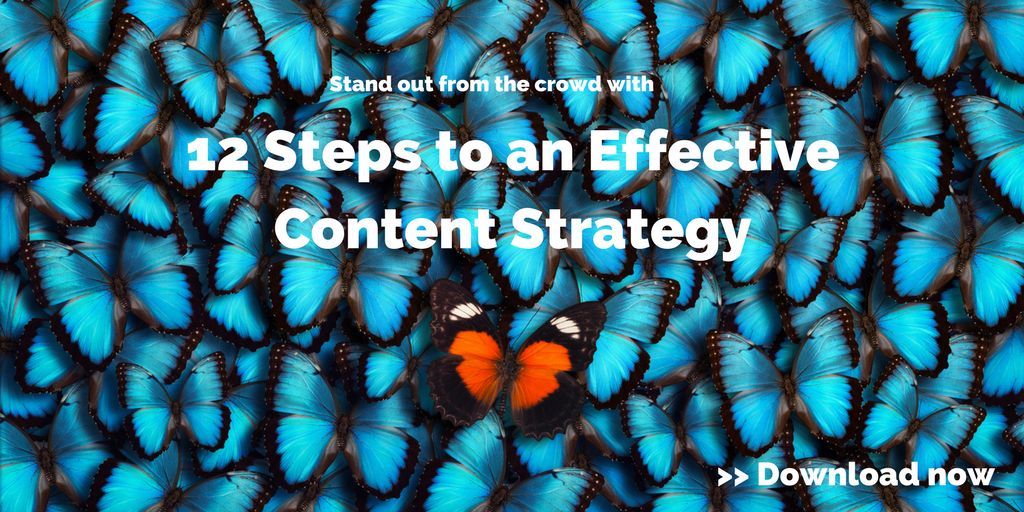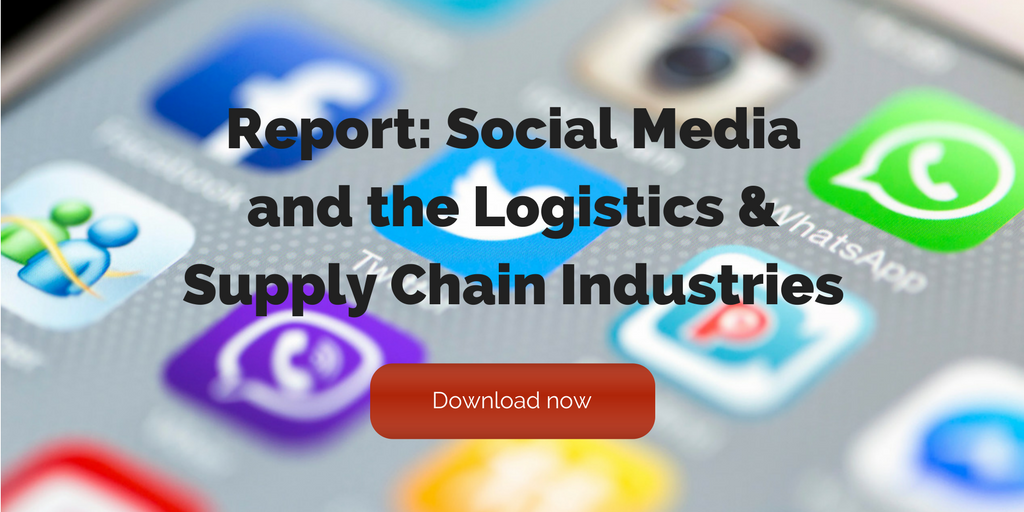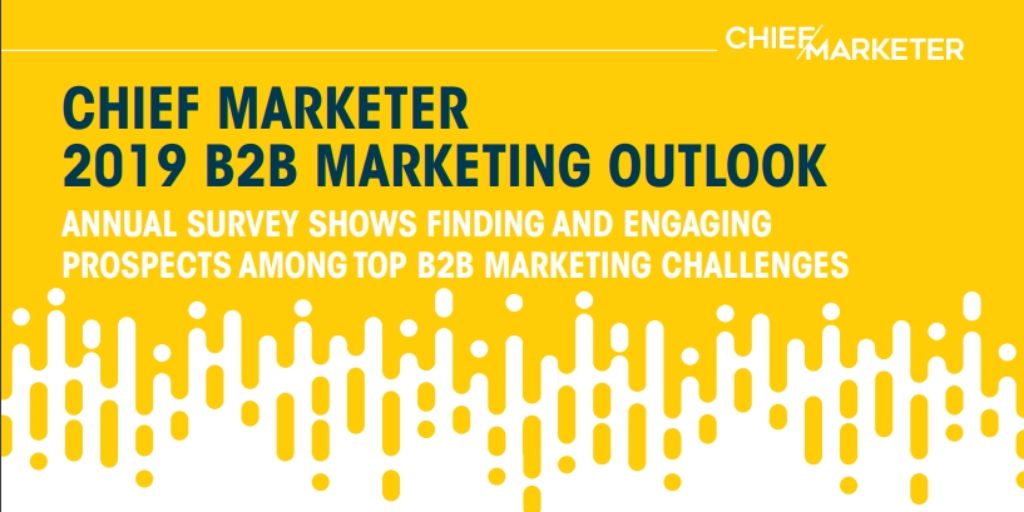
by Fronetics | Oct 1, 2019 | Blog, Content Marketing, Logistics, Marketing, Supply Chain
Consumers are more likely to trust content generated by their peers, which means higher conversion rates at a lower cost for your brand. Is your brand benefitting from user generated content?
Highlights:
- User generated content is content created by users of a specific brand or on a specific platform.
- Images and video of real people using your products or talking about your services will create trust and loyalty for your brand.
- Don’t be afraid to engage with your audiences over social media, respond to comments, and answer questions.
Video transcript:
I’m Katie Russell, a marketing strategist here at Fronetics, and today I wanted to talk to you about user generated content. Also known as UGC, user generated content is one of the hottest topics in digital marketing right now, but there are many businesses that don’t know how to use this tool to their advantage.
Let’s start with the basics.
What is UGC?
User generated content is content created by users of a specific brand or on a specific platform. It’s highly effective and comes at little or no cost to your business.
With that said, a lot can qualify as UGC including: comments on your blog, testimonials on your website, social media posts, blog articles, videos, Instagram stories, The list goes on and on. What it comes down to is that UGC is really any form of content that comes from a customer or a user.
So, what are the benefits of UGC?
Authenticity
We know that consumers are more likely to trust content generated by their peers, which means higher conversion rates at a lower cost for your brand. This also means the content is authentic and genuine reviews from buyers. Does it get any better than that?
Inexpensive
Since your brand is not generating the content, you don’t have to invest in the time and resources to create it.
What’s hot in UGC right now?
Visual content
Visual content is by far the most popular among audiences, so visual UGC is a no brainer. Images and video of real people using your products or talking about your services will create trust and loyalty for your brand.
Snackable content
We all know that the attention span for content is extremely short these days. When reposting UGC, focus on short, funny and positive content. Content that leaves users feeling informed and entertained will perform best for your brand.
Enlisting influencers
Whether it’s a famous celebrity or a micro-influencer that’s respected within your industry, brands involving influential people in their marketing campaigns can expect higher ROI from UGC.
Don’t forget to follow-up
Once you’ve grabbed the attention of your community with a successful UGC campaign, it’s up to you to capitalize on the momentum. Don’t be afraid to engage with your audiences over social media, respond to comments, answer questions. Have questions about starting a UGC campaign as a part of your digital marketing strategy? Visit us at fronetics.com.
Related posts:


by Fronetics | Sep 24, 2019 | Blog
Although content is extremely important, it’s only effective if it gets in front of the right audience. Here’s everything you need to know about content distrubution.
Highlights:
- Content distribution is the act of promoting content to online audiences in multiple media formats through various channels.
- Don’t fall victim to the “spray and pray” strategy where you post every piece of content anywhere and everywhere to increase the chances of achieving your desired results.
- Kick things off by looking at how each channel you want to use matches with the audience, your goals, and the priorities outlined in your overall content marketing plan.
Video transcript:
I’m Katie Russell, a marketing strategist here at Fronetics, and today we’re going to be talking about content distribution 101.
Content distribution is a term that’s often thrown around in marketing circles without any specifics attached. Given the growing popularity of content marketing, brands run the risk of having content lost in the shuffle. Here’s what you need to know to start implementing a successful content distribution strategy.
What is content distribution?
First off, what is content distribution? Content distribution is the act of promoting content to online audiences in multiple media formats through various channels.
There are three main components in the process for enabling your brand to build (and grow) communities of loyal, engaged consumers:
- Evaluate your distribution options
- Develop and document your strategy
- Promote your content
Evaluate your distribution options
Let’s start with evaluate your distribution options. Don’t fall victim to the “spray and pray” strategy where you post every piece of content anywhere and everywhere to increase the chances of achieving your desired results. You want to make sure your content is getting in front of the right people, with the right messaging.
Whether you are new at content marketing or a seasoned expert wanting to make the biggest splash possible, you need to decide which channels make the most sense for distribution. Some channels are more appropriate for your content than others, so you want a clear understanding of the unique value proposition of each, and how strongly those benefits align with your audience, brand voice, and goals.
Develop and document your strategy
Once you’ve generated a list of the most viable distribution options, building a strategy is the next step. Kick things off by looking at how each channel you want to use matches with the audience, your goals, and the priorities outlined in your overall content marketing plan. Resources and content types will help establish your editorial strategy. Make sure to document the details of your distribution decisions, so the information can be referenced easily, updated as necessary, and shared throughout your company.
Promote your content
Simply posting your content and waiting for your ideal audience to magically discover it won’t cut it. Make sure you are:
- optimizing your content with keywords, backlinks and calls to action
- repurposing and repackage top performing content
- consider sponsored content on social media sites
Want more information on how to successfully implement a content distribution strategy? Visit us at fronetics.com.
Related posts:


by Fronetics | Sep 18, 2019 | Blog, Marketing, Social Media, Video Marketing
Here are 15 social video marketing statistics that every supply chain marketer should be aware of in 2019.
Highlights:
- 87% of business use video as a marketing tool.
- 83% of marketers report that video gives them a good ROI.
- Social video marketing trends to be on the lookout for: live video and 1:1 personalized video.
If you believe everything you read, you might think that social video marketing has taken a bit of a hit in the past year or so. Largely thanks to Facebook’s well-publicized inflation of video view metrics, companies are naturally wary of investing in video creation and promotion on the platform.
But Facebook’s transgressions shouldn’t undermine marketers’ confidence in the future of social video marketing. Both expert analysis and hard numbers support the notion that video isn’t going anywhere. As digital media expert Michael Humphrey puts it, “All the major upward trends still wrap around video.”
According to Lux Narayan, CEO of independent social analytics company Unmetric, audiences “are longing for more interactive experiences as well as long-form storytelling that only video can best achieve.”
Here are 15 social video marketing statistics we think supply chain marketers should be aware of.
15 social video marketing statistics for 2019
- 47% of internet users have watched brand advertising videos on social media within the past 3 months. (Toluna)
- Of the social media users who have watched branded videos in the past 3 months, 43% watched on Facebook, 38% on YouTube, 18% on Instagram, and 13% on Twitter. (Toluna)
- 87% of businesses now use video as a marketing tool, up from 63% in 2017. (Wyzowl)
- 55% of people consume videos thoroughly – the highest percentage of any content type. (HubSpot)
- 30% of users prefer video ads to text or still image ads, while 52% report having no preference. (Only 18% prefer text or still image ads). (Toluna)
- 83%of marketers say video gives them a good ROI, up from 78% in 2018. (Wyzowl)
- 52% of consumers say that watching product videos makes them more confident in online purchase decisions. (Invodo)
- 68%of people say they’d most prefer to learn about a new product or service by watching a short video, over text-based articles (15%), infographics (4%), presentations and pitches (4%), and ebooks and manuals (3%). (Wyzowl)
- 48% of social media users have sought more information about a product or service based on social video marketing. (Toluna)
- 33% of survey respondents answered yes to having bought a product or service from a brand solely based on social video marketing. (Toluna)
- 88% of video marketers are satisfied with the ROI of their video marketing efforts on social media. (Animoto)
- 82% of social media users prefer live video from a brand to social posts. (Impact)
- 81% of marketers say video has helped them generate leads, and 84% say video has helped them increase traffic to their website. (Wyzowl)
- 61% of marketers have made more marketing videos in house in 2018 than they did in 2017. (Animoto)
- 67% of users said they would like to see more social video marketing in the future over other types of ads. The remaining 33% are indifferent, not opposed. (Toluna)
The future of social video marketing
Suffice it to say, the numbers bear out the fact that video marketing, and particularly social video marketing, is a trend that’s here to stay. Live video is increasingly popular, and savvy brands are incorporating it into their strategies.
In addition to live video, given the growing ease of shooting video on smartphones, another big trend is likely to be 1:1 video. Marketers can nurture leads via personalized video messages, rather than phone calls or emails, using video to offer additional content, product support, or simply to foster a relationship.
The bottom line is that video offers up the kind of engaging storytelling that users today want. And social media is the ideal distribution platform for video, making social video marketing a winning strategy.
Related links:


by Fronetics | Sep 10, 2019 | Blog, Content Marketing, Current Events, Marketing, Social Media
As social media users increasingly prefer to share content and recommendations via private messaging apps, brands need to be aware of how to take advantage of this trend.
Highlights:
- Nearly two-thirds of social media users now prefer to share content and recommendations through private messaging apps.
- Facebook Messenger is by far the most popular of these platforms.
- Chatbots can help brands engage in conversations on messaging apps and capture leads.
A recent study has confirmed a trend we’ve long predicted: A significant majority (63%) of social media users now express a preference for private messaging apps for sending messages or recommendations to people in their circle, as opposed to posting publicly on social media.
Marketers need to be aware of the implications of this shift toward private messaging apps, or “dark social channels.” Recognizing that three out of five users now prefer to connect via a private channel rather than open social media platforms, brands can tailor content accordingly and create a strategy that capitalizes on this shift.
Private messaging apps by the numbers
GlobalWebIndex and WeAreSocial teamed up to conduct research on content-sharing preferences, looking at more than 3,100 internet users. They asked research subjects how they tend to share information like articles, photos, videos, and recommendations and received the following responses:
- Private messaging apps: 63%
- Social media accounts: 54%
- Word of mouth: 51%
- SMS: 48%
- Email: 37%
Next, researchers broke down the results further, to reveal which messaging platforms users prefer:
- Facebook Messenger: 82%
- WhatsApp: 56%
- Instagram: 34%
- Snapchat: 32%
These are striking numbers. Not only is the preference for messaging apps clear, but brands should take note of the dominance of Facebook Messenger as the preferred platform. It’s likely that this preference is accounted for by the prevalence of social media for content consumption and distribution. Therefore, private messaging apps within social media platforms, with Facebook Messenger chief among them, are an easy and convenient way for users to share information.
What brands need to know about private messaging apps
The trend toward content sharing via messaging apps is mixed news for brands. On the one hand, marketers are likely be dismayed that a significant percentage of website visitors will likely be coming from these untraceable sources. On the other hand, says Olivia Valentine of We Are Social, “it means that there are likely more brand advocates than you might think.”
Valentine is right. When users share content and recommendations on messaging apps, they are engaging in authentic, private conversations, making the recommendations all the more meaningful.
Not only are social messaging apps becoming the preferred content-sharing platform among users, but brands can use these apps directly to engage with their audience. Facebook Messenger now has over 1.3 billion active monthly users globally and offers businesses the opportunity to connect directly and authentically with their audience.
Chatbots
Perhaps you’ve been reading about the rise of private messaging apps for content sharing and despairing over the idea that to keep your business relevant, your marketing staff will now need to be spending every working hour responding to thousands of messages with prospects.
Don’t despair. This is where the latest trend in artificial intelligence for marketers can help. Chatbots are computer programs that simulate, with ever-increasing accuracy, human conversation. This software communicates with your prospects inside a messaging app, carrying on a conversation until a prospect is ready to move down the sales funnel.
When it comes to creating chatbots, we recommend platforms including HubSpot’s Chatflows, Chatfuel, ChatScript, and Facebook’s Bots for Messenger tool.
The takeaway: the shift toward messaging apps is a net positive for marketers
To take full advantage of the growing user preference for private messaging apps, marketers need to ensure that their content is easily shared, engaging, and generative of authentic conversations among their audience. Furthermore, using chatbots can help businesses capture leads and engage in direct conversations on these platforms.
As Valentine points out, while the increased use of private messaging apps does mean that a certain amount of web traffic will be coming from untraceable sources, brands should be celebrating the fact that this trend means that recommendations are far more meaningful and your audience is becoming increasingly empowered to advocate for your brand.
Related links:


by Fronetics | Sep 4, 2019 | Blog, Content Marketing, Marketing, Strategy
The biggest challenges for B2B marketing, according to a recent report? Finding leads that convert and engaging the right target audience.
Highlights:
- Measuring social media ROI is a challenge for 58% of respondents, and 39% report that proving ROI is the biggest hurdle to securing C-suite buy-in.
- Only 23% of brands have a dedicated social media team.
- 60% of marketers report content marketing is their most valuable technique for lead nurturing.
Chief Marketer’s 2019 B2B Marketing Outlook report is out, and it’s full of revealing statistics for B2B marketers industry-wide. The survey studied 209 B2B marketers in more than 20 verticals, getting a bird’s eye view of biggest challenges and trends in B2B marketing.
Here are the top 10 stats you need to be aware of.
10 B2B marketing stats from Chief Marketer’s 2019 report
1) For 58% of respondents, measuring ROI is the top challenge surrounding social media marketing.
Measuring social media ROI is notoriously difficult, though certainly not impossible. For well over half of the survey respondents, it proved the greatest challenge when it comes to social media.
65% of respondents reported engagement as one of their biggest social media challenge, while 45% cited the challenge of having enough content. Adequate bandwidth to respond to social followers and post frequently and inadequate social budget (24% each) were lower on the list of social concerns.
2) Only 23% of brands have a dedicated social media team.
We’ve written before about how social media management is a herculean task that falls all-to-often to an overworked marketing team. Chief Marketing’s survey found that, for a vast majority of B2B brands (75%), their marketing team is in charge of maintaining social media presence.
Even as social media is becoming increasingly effective at ushering leads through the sales funnel, only 23% of brands surveyed have invested in a dedicated social media team, while 15% are outsourcing their social media management.
3) Articles/blog posts and reviews/customer testimonials are tied as the two most effective types of content for moving prospects through the sales funnel.
45% of respondents reported that articles and blog posts, as well as reviews and customer testimonials, are the most effective content types for moving prospects through the sales funnel.
Following closely behind, 32% reported whitepapers and 31% reported video as most effective. Partner content, at 26%, came next, while social media is gaining efficacy, coming in at 22%.
Respondents reported that for all content types, the visual aspects were key. For Informa Engage, for example, more visual content is performing well, says Tricia Syed, Vice President for Marketing Strategy and Execution. “In some markets, traditional whitepapers and webinars are still hugely popular, but we’re getting more visual with e-books [to illustrate] data.”
4) 39% of survey respondents reported being unable to prove ROI to C-suite as the biggest obstacle for getting approval for marketing expenditures.
Just as proving social media ROI is a poses a challenge for B2B marketing, proving overall content marketing ROI to win C-suite buy-in can be equally daunting. 39% reported it as the biggest hurdle to getting marketing expenditures approved.
46% of respondents cited the challenge of budgets that are focused elsewhere, while 33% reported that executives still don’t understand the need for marketing expenditures.
5) For 60% of respondents, content marketing is the most valuable technique for lead nurturing.
Content marketing is reported by 60% of marketers as their most valuable technique for lead nurturing. Email marketing led the pack at 62%, while in-person marketing took a close third place at 57%. When it comes to lead nurturing for B2B marketing, social media was relatively low on the list, reported by only 20% of respondents as their most valuable technique.
6) Only 22% of respondents have an in-house editorial team dedicated to content creation.
While content marketing is overwhelmingly reported by marketers as being a highly effective technique for generating, nurturing, and converting leads, relatively few brands have chosen to invest in a dedicated in-house editorial team for content creation. Instead, a whopping 80% of marketers are charged with creating their own content.
“That’s a surprising disconnect,” says James Furbush, B2B marketing manager of Lord Hobo Brewing. “I’m not surprised marketing teams are creating content, but if you’re going to be that focused on content marketing, having an editorial team is an important investment.”
Perhaps even more surprisingly, only 23% of respondents are taking advantage of the opportunity to outsource content creation, an excellent alternative for companies who are unable to afford a dedicated in-house team.
7) 42% say that their organizations will increase martech budgets in 2019.
Martech, or the fusion of marketing and technology, is taking over B2B marketing. 42% of survey respondents reported that their martech budgets will be increasing in 2019, while 40% said that existing martech budgets will remain the same. Only 4% reported that they anticipate a decrease in martech budget.
When asked what types of martech they plan on investing in, 45% of respondents pointed to marketing automation, 43% to video, 40% to email, 38% to customer experience, and 37% to social media management.
Interestingly, despite all the discussion surrounding AI, only 9% of businesses surveyed report that they are considering investing in these technologies.
8) When it comes to generating new leads, 55% reported that finding leads that convert is their biggest challenge.
More than half of survey respondents pointed to the challenge of finding leads that ultimately convert as the greatest obstacle to generating new leads. 57% reported that their biggest challenge is getting targeted prospects to engage with their brands.
What’s interesting about these numbers is that, while marketers are reporting these issues as lead-generation obstacles, they are simultaneously pointing to content marketing as their most effective tool for lead nurturing and conversion.
9) For 44% of respondents, email is a top source of B2B leads.
When it comes to which channels are the largest sources of B2B leads, email leads the pack, with 44% of respondents putting it first. Online searches came in at a close second at 43%, and live events came in at 41%.
A respectable 36% of respondents cited content marketing as a top source of B2B leads, while 22% pointed to social media.
Knowing where leads are coming from is only part of the picture. Perhaps unsurprisingly, the channel that produced the leads with the highest ROI was email for just under half (49%) of survey respondents.
10) 56% say cost of conversion is the metric that matters most in marketing attribution.
When asked which metrics matter most in marketing attribution, cost of conversion topped the list at 56%, followed closely by amount of time to convert at 53%. Other important metrics included channel (34%), first click (29%), and last click (22%).
“At the end of the day, the most important takeaway when setting up campaign attribution is to think about your goal,” said one respondent. “Start with the end in mind, reverse engineer your marketing campaign, and set up ‘mile markers’ along the way to track trends in your prospects’ digital footprints.”
Related posts:









